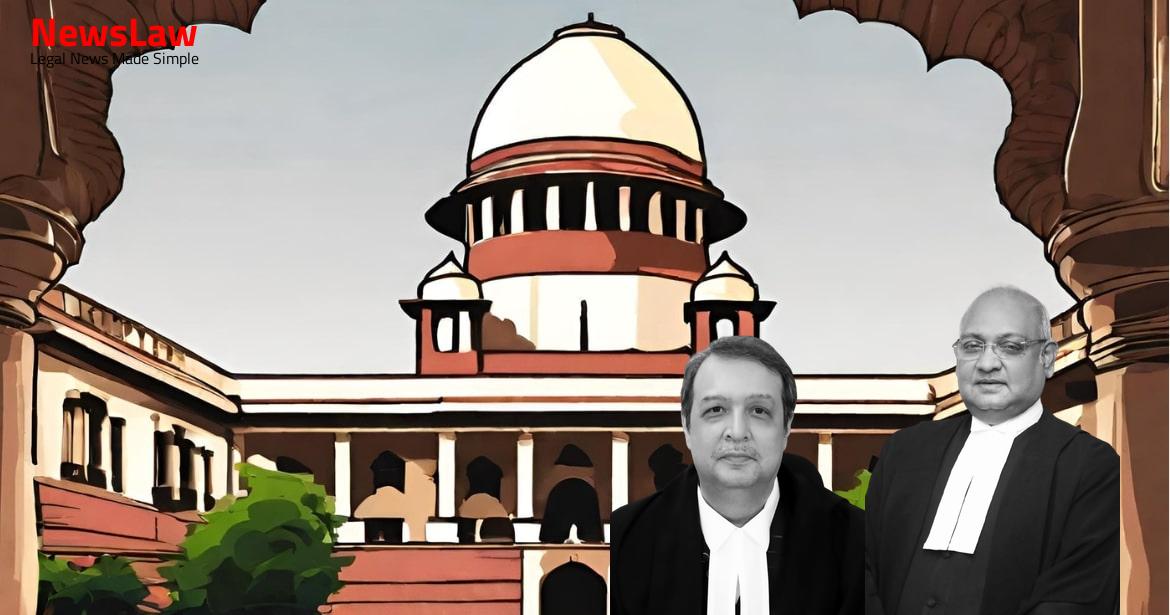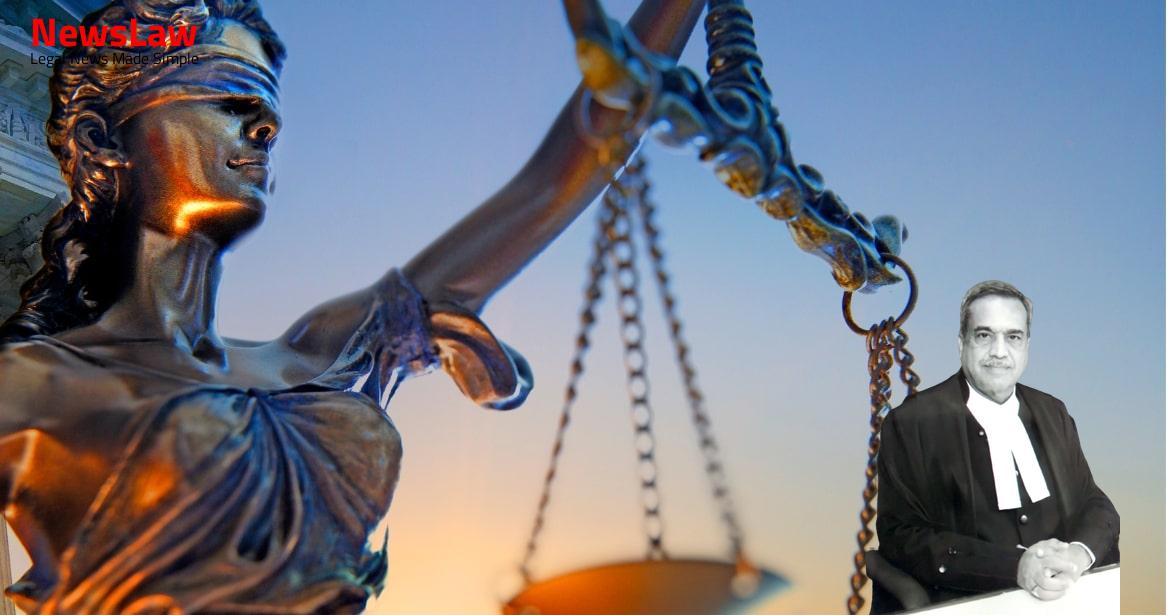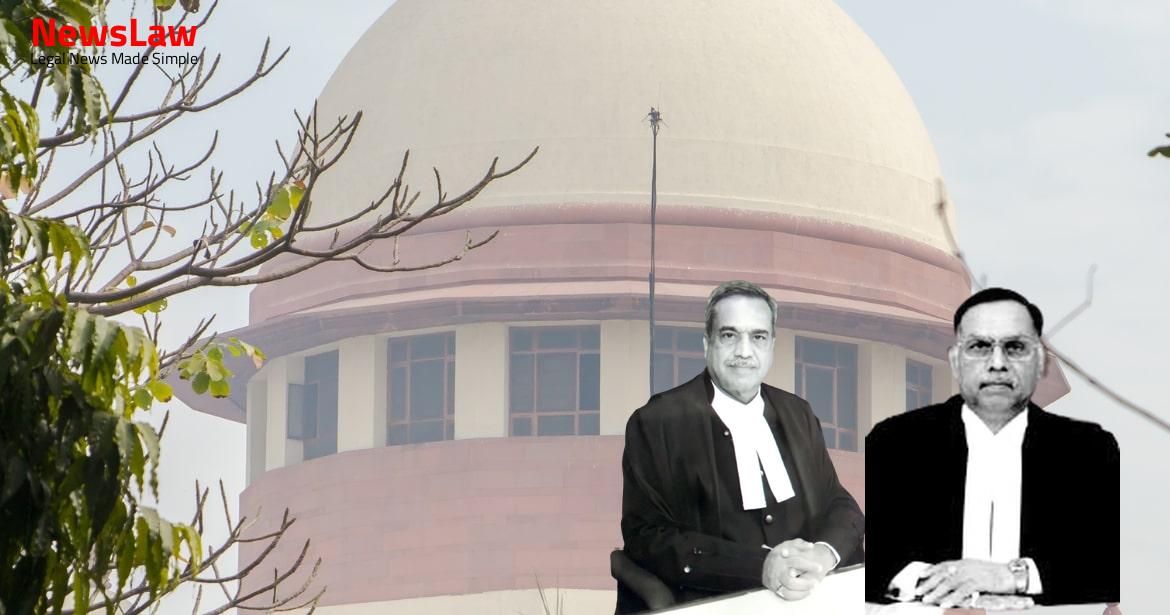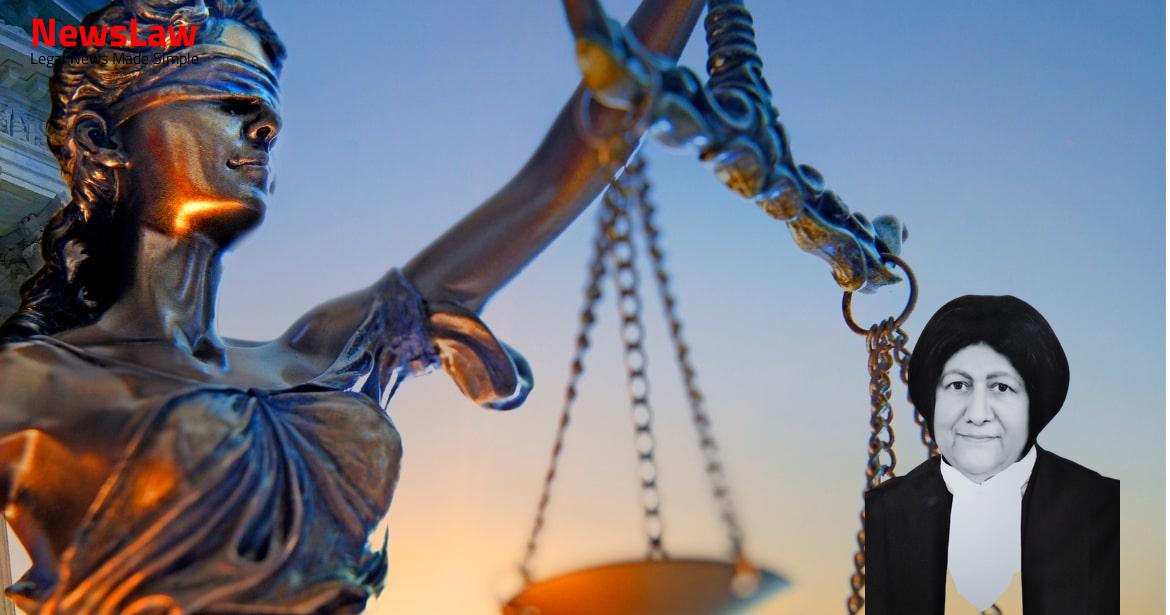Explore the nuanced legal analysis of a criminal case revolving around circumstantial evidence. Delve into the court’s in-depth scrutiny of confessions, motive, and conduct to determine the accused’s guilt. The significance of corroborative evidence, burden of proof, and implications of false explanations are key aspects discussed. Join the discussion on the intricacies of legal proceedings when faced with circumstantial evidence in criminal trials.
Facts
- The accused appellant was charged under Section 302 of the IPC for the murder of his wife and four daughters.
- Post mortem reports revealed incised wounds on the head and neck of the deceased.
- The accused appellant denied the charges and claimed innocence during trial.
- The motive for the crime was attributed to the accused’s alleged affair with a married woman named Manju.
- The accused appellant was arrested after voluntarily disclosing the location of the murder weapon and blood-stained clothes.
- The trial court convicted the accused based on circumstantial evidence, including the weapon discovery, extra judicial confession, motive, false explanations, and unnatural conduct.
- The High Court upheld the death sentence awarded to the accused.
- Accused appellant sentenced to death under Section 302 IPC by Sessions Judge, Lakhimpur Kheri.
- Accused appellant to pay fine of Rs. 20,000/- and undergo further rigorous imprisonment for one year in default of payment.
- Sessions Judge made a reference to High Court for confirmation of death sentence under Section 366 of CrPC.
- Accused appellant filed Criminal Appeal No 1959 of 2016 challenging conviction and sentence.
- High Court dismissed Criminal Appeal No 1959 of 2016, confirming the death sentence reference under Section 366 of CrPC.
Arguments
- The prosecution failed to lead credible evidence connecting the accused appellant to the alleged crime.
- The conduct of the appellant, as evidenced by the discovery, is relevant under Section 8 of the Evidence Act.
- The discovery evidence is admissible as conduct under Section 8 of the Evidence Act, apart from the disclosure statement under Section 27.
- The defence of the accused appellant claiming unidentified assailants is contradicted by his conduct.
- The accused’s motivation for the crime is attributed to an extramarital affair and desire to marry another woman.
- The prosecution has not explained the injuries suffered by the accused.
- The prosecution relies on circumstantial evidence such as extra judicial confession and weapon discovery.
- The witnesses who corroborate the confession are deemed unreliable by the defence.
- The prosecution’s obligation to explain the accused’s injuries is discussed in relation to grievous nature.
- The defence argues against conviction based solely on motive and calls for acquittal.
- The defence criticizes the trial court and High Court for their judgments, emphasizing errors in holding the accused guilty of murder.
- In cases relying on circumstantial evidence, motive’s significance is highlighted.
- The defence emphasizes the dismissal of key evidence weakens the prosecution’s case.
- The defence disputes that post-crime conduct alone is insufficient for conviction of murder.
- Suggestions are made for improved legal aid provision in cases involving undefended accused persons.
- The appellant’s claim of an unidentified person firing a shot from a firearm is false as no cartridge or pellets were found at the scene.
- The scope of the appeals filed under Article 136 of the Constitution is limited.
- The trial court and High Court’s view is correct, and their appreciation of evidence is not perverse.
- Mr. Upadhyay requests the dismissal of the appeals as they lack merit.
- The Court may only overturn concurrent findings of guilt in exceptional circumstances.
Analysis
- The analysis of the evidence revolves around the concept of inducement, promise, and threat in confessions.
- The confessions made by the accused appellant to various individuals are scrutinized for their voluntary nature.
- The discovery of the weapon of offense and blood-stained clothes is an essential piece of incriminating evidence.
- The significance of motive in cases based on circumstantial evidence is highlighted.
- The reliability of extra-judicial confessions and the impact of false explanations offered by the accused are considered.
- The burden of proof in criminal cases, especially when based on circumstantial evidence, is discussed.
- The evidence surrounding the injuries on the accused appellant is analyzed for its implications.
- The necessity of proving the contents of the discovery panchnama for it to be considered as legal evidence is emphasized.
- The implications of false confessions and the importance of voluntary and free confessions are evaluated.
- The role of conduct of the accused in the evidence and its impact on the case proceedings is examined.
- The rule of prudence does not require each circumstance in a confession to be independently corroborated.
- Information given must be recorded and proved, or exact information must be adduced through evidence.
- In matters of direct testimony, the act of belief seems to be contemporaneous to the act of hearing.
- Judgment on circumstantial evidence is inferential and based on observations in similar circumstances.
- Presumptive is not always synonymous with circumstantial evidence.
- Voluntary extra-judicial confessions can be the basis of conviction if credible.
- The admissibility and evidentiary value of extra-judicial confessions depend on various factors.
- Conviction based on a voluntary confession should ideally be corroborated by independent evidence.
- The ends of criminal justice are not just catching the culprit but achieving justice.
- Equal justice and free legal aid are fundamental principles of the legal system.
- Free legal aid is crucial for ensuring fair procedure and equal opportunity in securing justice.
- The State is mandated to provide legal aid to accused persons at State expense if they cannot afford a lawyer.
- The accuracy of conclusions based on circumstantial evidence must be supported by clear, cogent, and unimpeachable evidence.
- Proper and vigilant investigation is necessary to collect evidence and identify the culprit.
- Cross-examination is not the only way to discredit a witness; oral testimony contrary to proved facts should be discarded.
- Failure to explain injuries on the accused may affect the prosecution’s case.
- The information supplied by a person in custody that led to the discovery of a fact is admissible as evidence.
- Section 27 of the Evidence Act, 1872 allows for information received from the accused to be proved in court.
- If the accused provides information leading to the discovery of a fact while in police custody, that information can be used as evidence.
- The process for using such information includes calling two independent witnesses to the police station to witness the accused’s statement.
- The accused should express willingness to point out the location of hidden evidence in front of these witnesses.
- The exact words of the accused should be documented in a panchnama at the police station.
- The police, accused, and witnesses then proceed to the location indicated by the accused to discover the evidence.
- If evidence is found at that location, it becomes part of the panchnama and can be used as admissible evidence in court.
- The conditions for the applicability of Section 27 include the discovery of a fact based on information from the accused, the accused being in police custody when providing the information, and the information relating distinctly to the discovered fact.
Also Read: Supreme Court Judgment:
Supreme Court Upholds Benefit of Input Tax Credit in Uttar Pradesh Value Added Tax Act 2008
Decision
- The conviction of the accused appellant under Section 302 of the IPC is set aside.
- The evidence of the investigating officer should have a rhythm explaining step by step how the investigation proceeded.
- This is necessary to exclude the likelihood of any innocent person being falsely accused.
- The gravity of the offence should not sway judgement based on doubtful circumstances.
- The appeals are allowed, and the accused is acquitted of the charge.
- The accused shall be set at liberty unless required to be detained for other offences.
- Pending applications, if any, are also disposed of.
Case Title: RAMANAND @ NANDLAL BHARTI Vs. THE STATE OF UTTAR PRADESH (2022 INSC 1075)
Case Number: Crl.A. No.-000064-000065 / 2022



